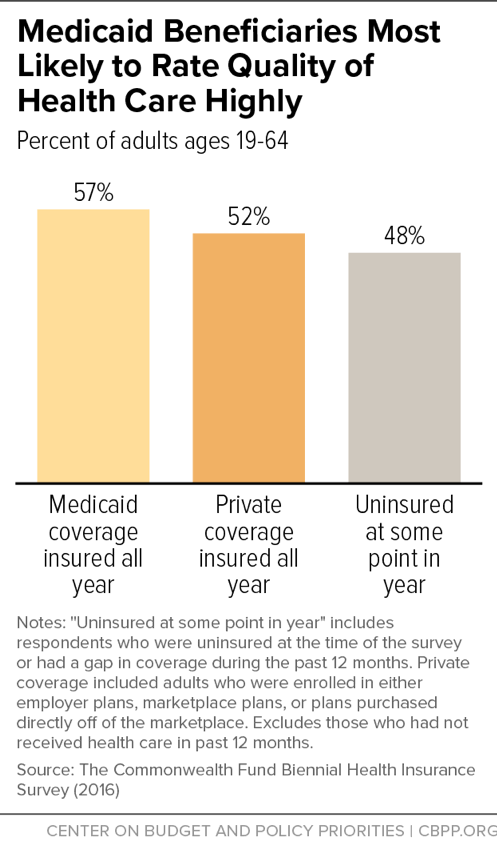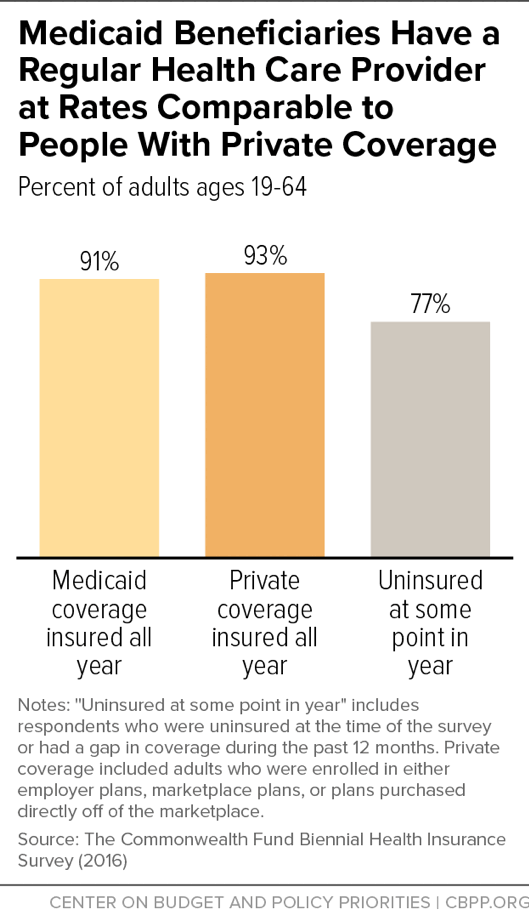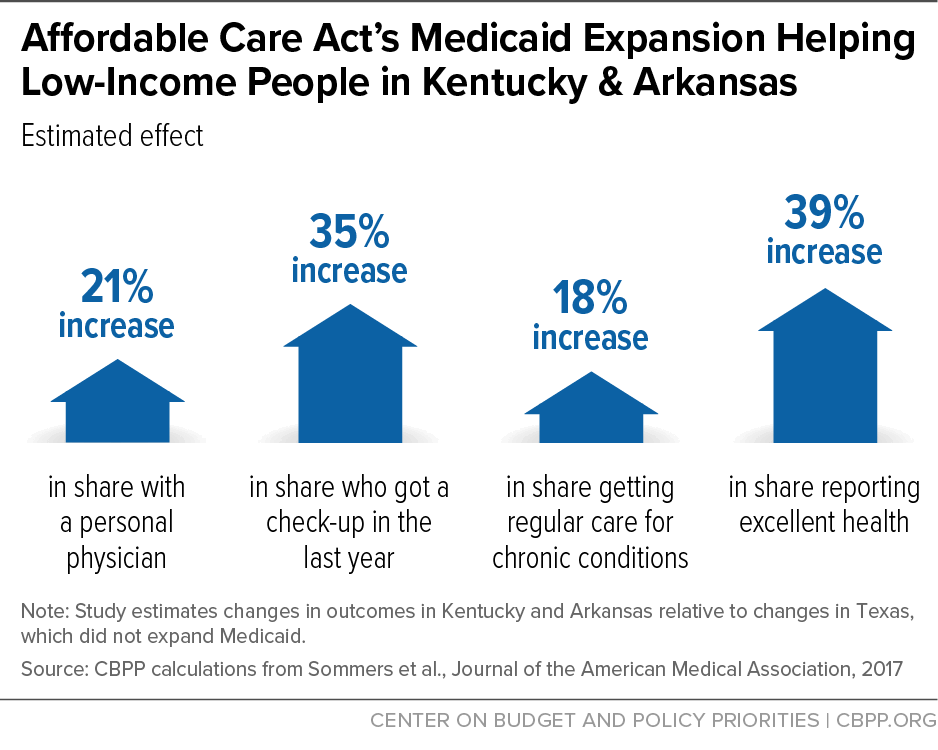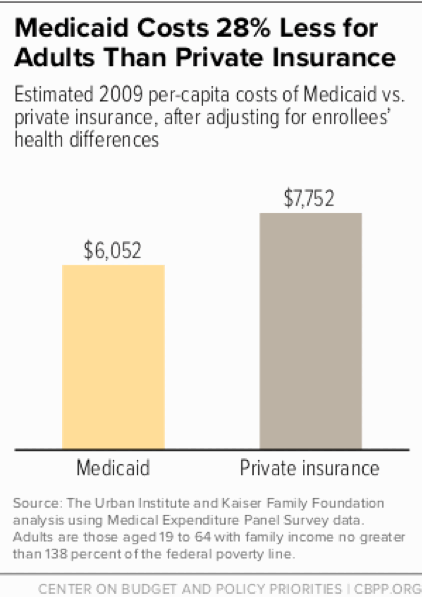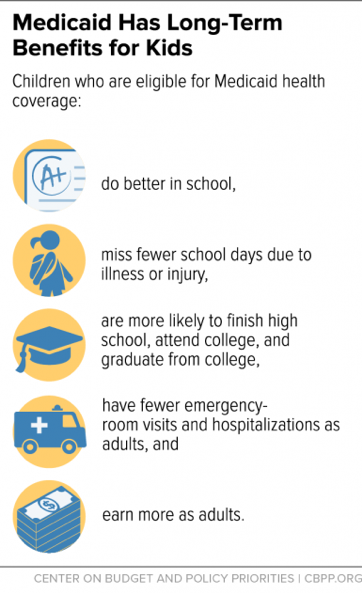off the charts
POLICY INSIGHT
BEYOND THE NUMBERS
BEYOND THE NUMBERS
Today marks 53 years since the enactment of Medicaid, an essential and popular part of the nation’s health care system. Since then, the program has transformed health care for low-income families and individuals, including children, parents, pregnant mothers, seniors, people with disabilities, and low-income workers. Medicaid offers high-quality, comprehensive, and efficient coverage, in at least five key ways, research shows.
- First, it offers high-quality care. Medicaid beneficiaries are likelier than those with private coverage to say their care was excellent or very good.
- Second, Medicaid beneficiaries have a regular health care provider — an essential measure of access to care — at rates comparable to people with private coverage.
- Third, as we’ve explained, gaining access to Medicaid improves access to health care. One recent study compared Arkansas and Kentucky, which have adopted the Affordable Care Act’s (ACA) Medicaid expansion, with Texas, which hasn’t. In the expansion’s first three years, the uninsured rate among the group eligible for expansion coverage dropped more than 20 percentage points more in Arkansas and Kentucky than in Texas. Medicaid expansion in Arkansas and Kentucky led to improvements in access to care across a range of indicators — a result corroborated by many other studies of the Medicaid expansion.
- Fourth, Medicaid is, if anything, more efficient and cost-effective than private insurance. Covering adults on Medicaid costs about 28 percent less than if they were covered by private insurance, after adjusting for differences in health status.
- Fifth, Medicaid has long-term benefits. Medicaid coverage not only has a significant positive impact on children’s near- and long-term health, but it also increases their educational attainment and job earnings. Children covered by Medicaid during childhood have better health as adults, with fewer hospitalizations and emergency room visits, research shows. Moreover, children covered by Medicaid are likelier to graduate from high school and college and have higher wages and pay more in taxes as adults.
Topics:
Policy Basics
Health
Stay up to date
Receive the latest news and reports from the Center
